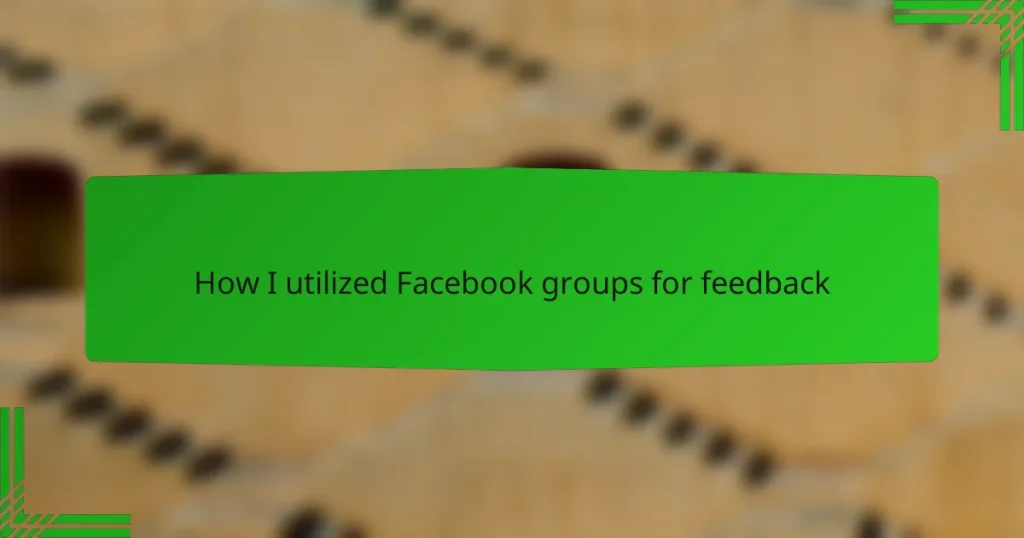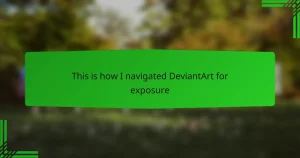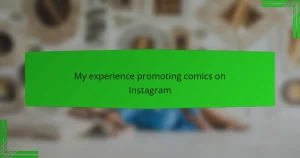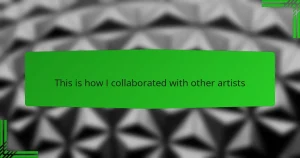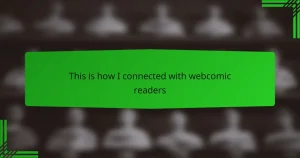Key takeaways
- Engaging in Facebook groups fosters a strong sense of community, providing support, feedback, and collaboration among webcomic creators.
- Participating actively and initiating conversations enhances connections, encouraging more sharing and discussions within the group.
- Embracing constructive feedback, even when it feels challenging, can lead to significant improvements in storytelling and character development.
- Implementing diverse feedback effectively helps in refining webcomic narratives and artistic expression, ultimately benefiting audience engagement.
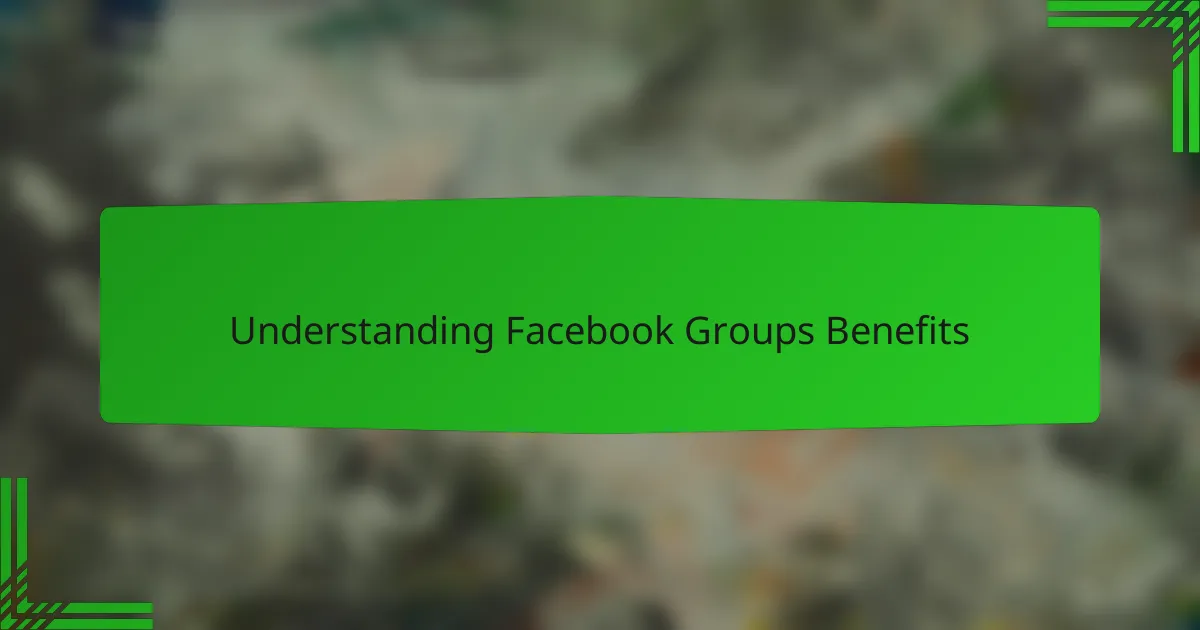
Understanding Facebook Groups Benefits
Engaging with Facebook groups has been a game changer for me, especially in the context of webcomics. When I first joined a few groups focused on comics and graphic storytelling, I was blown away by the sense of community and support available. It’s incredible how fellow creators and enthusiasts come together to share not just their work, but constructive feedback that has helped shape my comics.
The benefits of participating in Facebook groups extend beyond just receiving feedback; they foster collaboration and networking, enabling me to connect with other artists who have similar interests. The encouragement I received after sharing my drafts often motivated me to push my creative boundaries. Here are some specific benefits I’ve experienced:
- Access to a targeted audience interested in webcomics.
- Opportunities to receive honest, constructive criticism and suggestions.
- Networking possibilities with other creators and potential collaborators.
- A sense of belonging in a community that appreciates the art of storytelling.
- Regularly updated resources, tips, and trends shared by members.
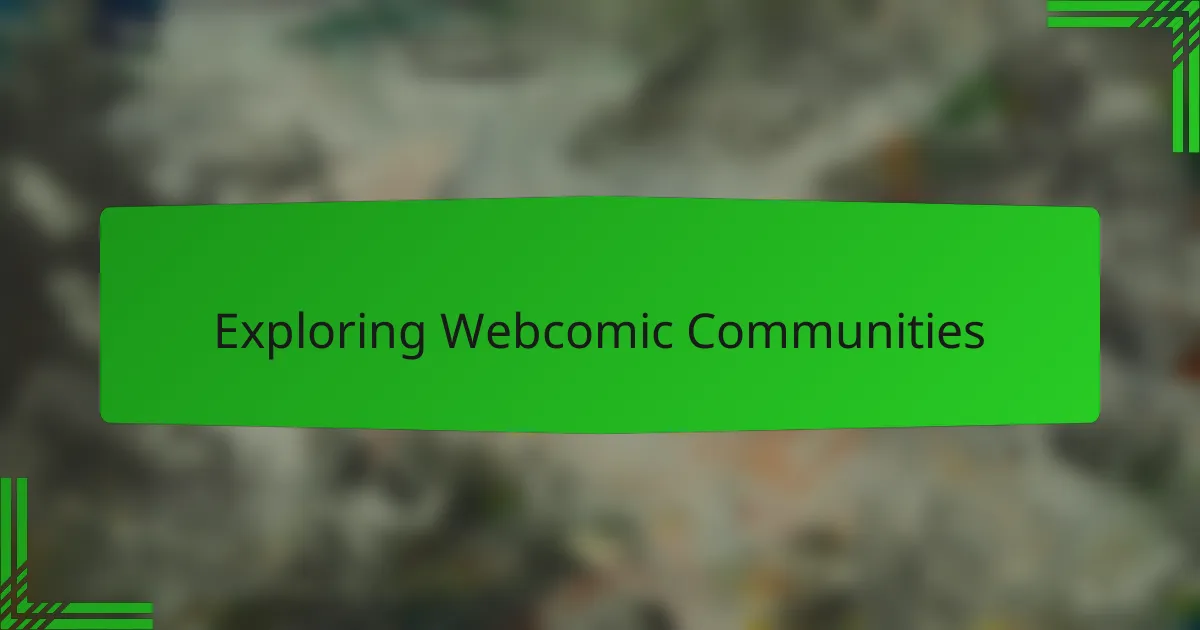
Exploring Webcomic Communities
Exploring webcomic communities has been a game-changer for me. When I first started sharing my work, I felt isolated and unsure about how to improve. Joining Facebook groups aimed at webcomic creators opened doors I never knew existed. The sense of belonging and support from fellow artists has been invaluable, providing not just feedback but friendships.
These communities foster a lively exchange of ideas and constructive criticism. I remember posting a draft of a new comic along with a specific question about character development. The responses I received were insightful and helped me refine my story in ways I hadn’t anticipated. It’s incredible how interconnected feedback can lead to breakthroughs in creativity.
- Access to diverse perspectives on storytelling and art style.
- Opportunities to engage with fellow creators and share experiences.
- Real-time feedback that accelerates improvement and confidence.
- A supportive environment that celebrates each other’s successes.
- Resources and tips on marketing and promoting webcomics effectively.
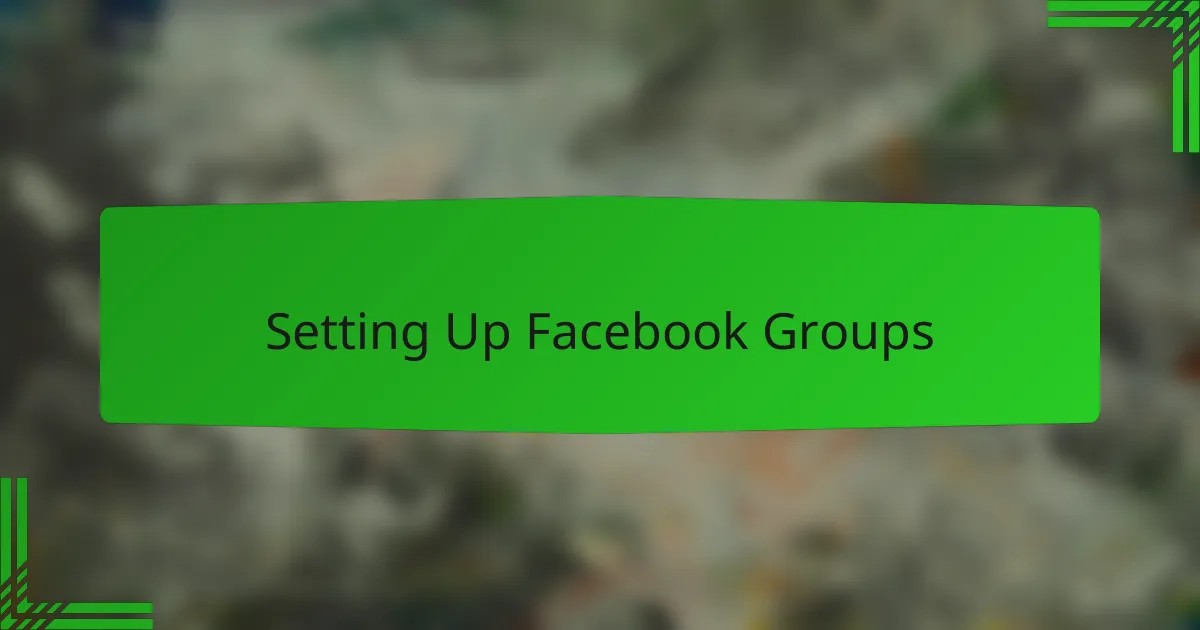
Setting Up Facebook Groups
Creating a Facebook group for my webcomic journey was one of the best decisions I made. It started with a simple idea: gather like-minded creators who share a passion for comics. I set clear guidelines for the group, ensuring that it would be a safe space for sharing work and offering constructive feedback. This structure helped foster a positive atmosphere where everyone felt comfortable participating.
I remember the first few days vividly; I was eager yet apprehensive as I invited others to join. What if no one was interested? My worries quickly faded as artists started to pour in, excited to share their creations. The engagement was immediate. Members began posting their comics, and the feedback flowed in, creating a vibrant exchange that I had hoped for.
As the group evolved, I realized the importance of consistency—regular updates and discussions kept members engaged. I encouraged everyone to share resources, which created a treasure trove of tips and techniques. It wasn’t just about feedback anymore; it became a collaborative space where we all grew together. Isn’t it amazing how a simple Facebook group can transform into a hub of creativity and support?
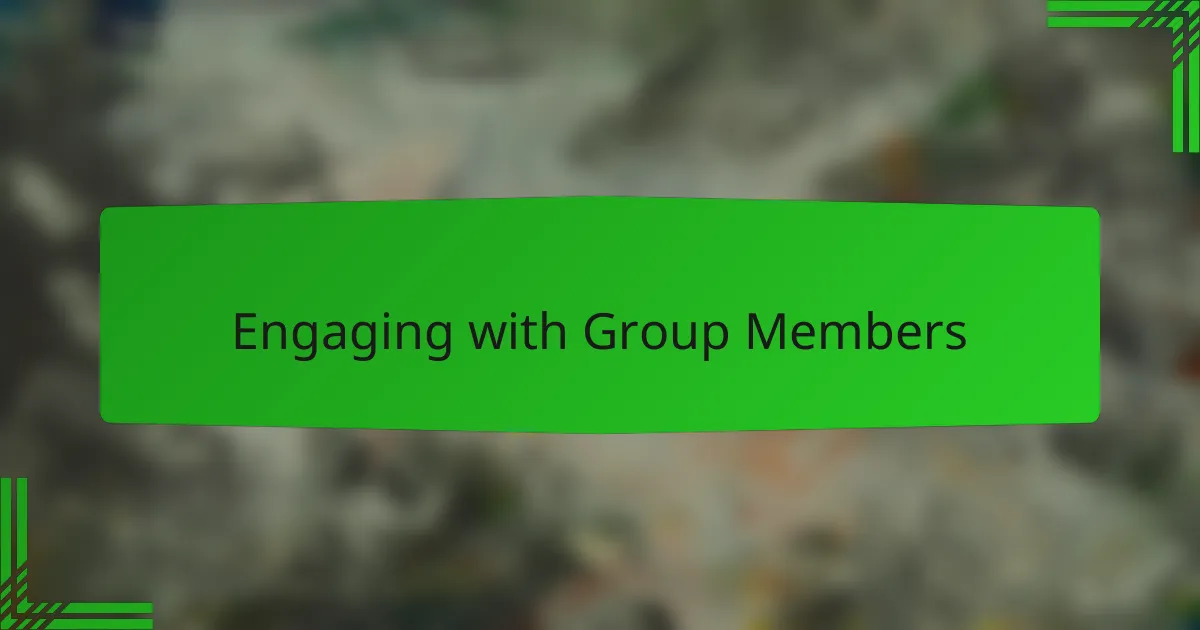
Engaging with Group Members
Engaging with group members is vital for cultivating a thriving community. When I first started sharing my work, I made it a point to respond to comments on my posts actively. It’s remarkable how a simple “Thank you!” or a thoughtful reply can foster deeper connections. I often found that when I engaged genuinely, other members felt encouraged to share more, leading to richer discussions about our work.
I also discovered the power of initiating conversations. One day, I decided to pose a question about creative block and how others overcame it. The flood of responses was both enlightening and comforting—I realized that many of us faced similar challenges. This type of engagement not only sparked discussions but also made members feel valued, creating a more inclusive atmosphere. Don’t you think everyone wants their voice to be heard?
Moreover, showcasing the work of others in the group became a rewarding practice. I would highlight a fellow creator’s comic and share what I love about it. This not only boosted their confidence but also inspired others to participate more actively. Each shout-out was a small celebration, reinforcing a culture of support and mutual appreciation. It’s fascinating how nurturing this kind of environment can lead to meaningful connections and collective growth in creativity.
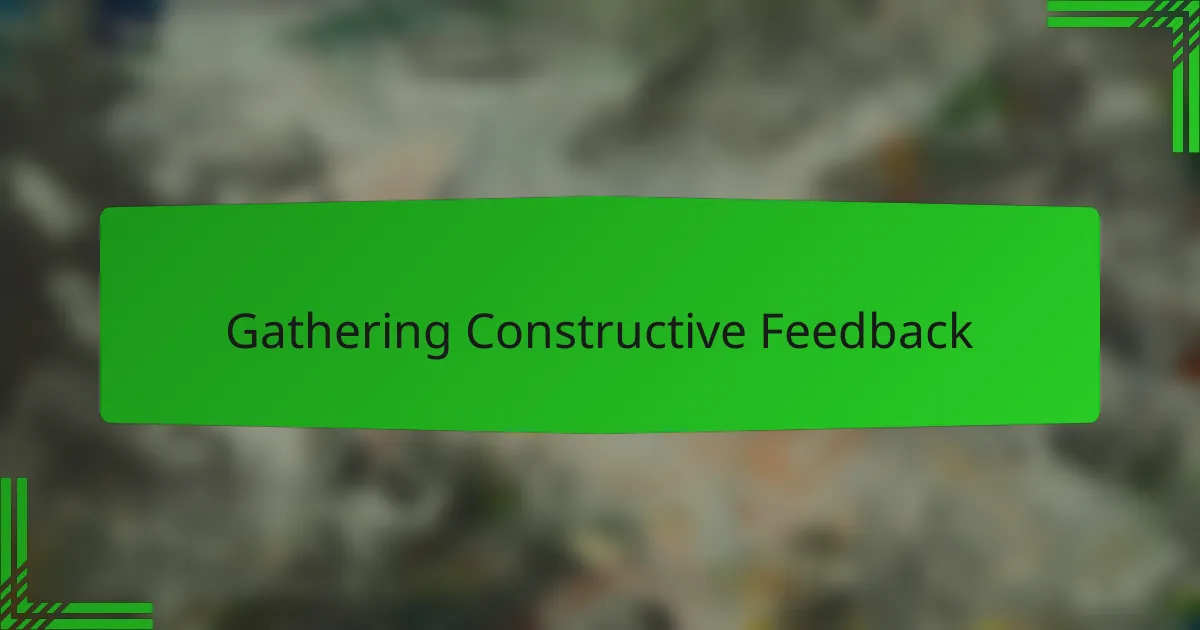
Gathering Constructive Feedback
Gathering constructive feedback has been an enlightening journey for me. When I shared my first comic draft in a Facebook group, I was overwhelmed by the responses. People offered not just critiques but suggestions that opened my eyes to elements of storytelling I hadn’t considered. It felt like receiving a treasure map to improve my craft.
Each comment was a stepping stone, guiding me toward a more polished version of my work. I remember one member pointed out a weak plot point, which initially stung. But once I sat with the feedback, I realized how right they were. Their perspective helped me sculpt a stronger narrative, and that’s when the magic happened—transforming my comic from good to something truly engaging.
I often wonder, why do we shy away from feedback? In my experience, it’s often our fears that hold us back. Embracing constructive criticism not only enhances our skills but also helps us build resilience. The comments I received fueled my motivation to create more, and I’m grateful for that. Isn’t it amazing how embracing feedback can lead to growth we never knew we needed?
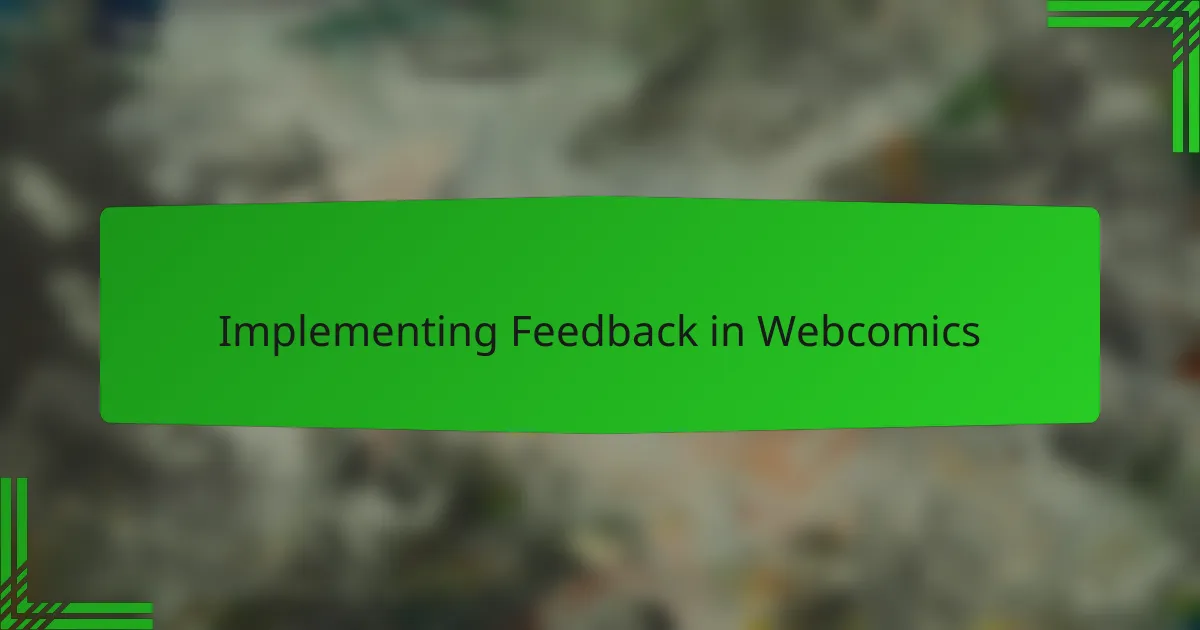
Implementing Feedback in Webcomics
Implementing feedback effectively is crucial in the webcomic creation process. I remember one instance where I received a critique that really changed my perspective on pacing. A fellow group member pointed out that my comic’s flow felt rushed in certain scenes. At first, I felt defensive, but after reflecting on their feedback, I took the time to slow things down in my storytelling. This adjustment not only improved my comic’s clarity but also allowed readers to connect more deeply with my characters. Have you ever experienced something similar?
Taking actionable steps based on the feedback I received has also been key to my growth. For example, I once posted an early draft where one individual suggested I experiment with color palettes. I hesitated at first—change can be daunting—but stepping outside my comfort zone opened up new avenues for artistic expression. When I finally implemented those color choices, I saw a significant difference in how my story resonated. It’s a reminder that sometimes the best transformations come from a willingness to embrace a little discomfort.
Another aspect of implementing feedback is recognizing the value in diverse input. I found that feedback regarding characters often varied greatly from reader to reader. One might feel a character was underdeveloped, while another saw them as relatable and charming. This range of perspectives indicated to me that I shouldn’t focus solely on individual opinions but rather on overarching patterns in the feedback. By synthesizing these insights, I could enhance the character’s depth in a way that appealed to a wider audience. Isn’t it fascinating how feedback can illuminate different facets of our work we might overlook?
